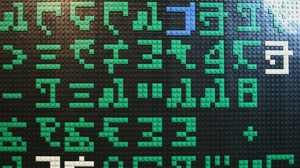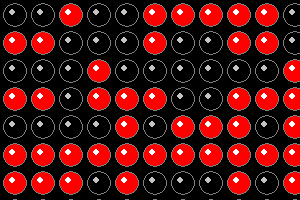The creation of the processes, how long the strand is and so on is mostly random. Each trail also
left a trailing invisible character so that the letters for Trinty Help could be overlayed.
An
awk script was written to slot in the Trinity
Help characters and flash them and pop them out. This process is mostly hand-written and
controlled. The output from this step was also a file that LegoBoard could understand.
Another awk script was used to merge the falling rain characters and the Trinity Help characters
into a single file. That file was rendered with LegoBoard to produce a bitmap image sequence.
Another awk script was written to generate a tgl script that did the slow zoom in on the letters
for each frame. This script was borrowed from other scenes in our movie that have camera matching
motion and zooming in them.








